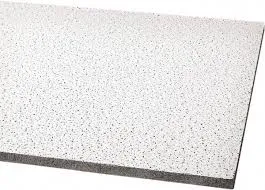8 月 . 07, 2024 12:50 Back to list
Exploring the Benefits and Applications of Cross T Ceiling Grid Systems in Modern Construction
Understanding Cross T Ceiling Grids A Comprehensive Overview
In modern architectural design and interior construction, the use of ceiling systems has evolved significantly, enabling architects and interior designers to create both functional and aesthetically pleasing spaces. Among the various ceiling systems available, the cross T ceiling grid has emerged as a popular choice. This article explores the features, benefits, and applications of cross T ceiling grids, shedding light on why they are widely favored in both commercial and residential settings.
What is a Cross T Ceiling Grid?
A cross T ceiling grid is a framework structure used to support ceiling tiles or panels. It consists of two main components the main runners, which are installed parallel to the longest side of the room, and cross tees, which are inserted perpendicular to the main runners. This configuration creates a grid-like pattern that can hold various types of ceiling tiles, including acoustic tiles, gypsum boards, and more, providing a seamless and uniform appearance.
Benefits of Cross T Ceiling Grids
1. Ease of Installation One of the most significant advantages of cross T ceiling grids is their ease of installation. The modular nature of the grid allows for quick assembly and adjustments to fit the dimensions of any space. This is particularly beneficial for large areas where speed and efficiency are essential.
2. Versatility Cross T ceiling grids can support a variety of ceiling tiles, enabling designers to choose finishes that align with their aesthetic vision. Whether creating an acoustic environment in an office building or achieving a sleek modern look in a retail space, the flexibility of the grid system makes it suitable for diverse applications.
3. Acoustic Control Cross T ceiling grids are often paired with acoustic tiles, which help control sound within a space. This is especially important in settings like classrooms, conference rooms, and auditoriums where noise reduction is key to functionality.
cross t ceiling grid

4. Accessibility The grid system allows for easy access to the space above the ceiling. This is crucial for maintenance and repairs of electrical and HVAC systems without the need for extensive demolition, saving time and costs associated with future upkeep.
5. Cost-Effective Utilizing a cross T ceiling grid typically provides substantial cost savings. The materials used are often less expensive than alternative ceiling systems, and the ease of installation minimizes labor costs. Additionally, the longevity and low maintenance of the grid help to reduce long-term expenses.
Applications of Cross T Ceiling Grids
Cross T ceiling grids are widely used in various commercial and residential environments. In commercial settings, they are commonly found in offices, shopping centers, schools, and hospitals. Their ability to accommodate lighting fixtures, air vents, and other utilities makes them particularly suitable for environments requiring a functional, multi-use space.
In residential settings, homeowners might employ cross T grids in basements, kitchens, or recreational rooms where a modern aesthetic is desired. They can seamlessly integrate into interior design plans while providing practical benefits such as sound insulation and easy access to utilities.
Conclusion
The cross T ceiling grid embodies a perfect blend of functionality and design appeal, making it an invaluable choice for architects and interior designers. Its modular characteristic, combined with benefits such as acoustic control, easy installation, and accessibility, positions it as a go-to solution for a wide range of applications. As design trends continue to evolve, the cross T ceiling grid will undoubtedly remain a staple in creating efficient, modern, and aesthetically pleasing spaces. Whether in commercial real estate or residential projects, understanding the value and application of this ceiling system can significantly enhance the overall design and functionality of any environment.
-
Revolutionizing Interior Design with Ceilings t grid Suspended SystemNewsOct.29,2024
-
Revolutionizing Ceiling Design with ceiling access panel with Gypsum Tile WaterproofNewsOct.29,2024
-
Revolutionizing Interior Design with PVC Gypsum Ceiling: A Comprehensive GuideNewsOct.29,2024
-
Elevating Interior Design with High quality Mineral Fiber Ceiling TilesNewsOct.29,2024
-
Revolutionizing Interior Design with PVC Gypsum Ceiling: A Comprehensive GuideNewsOct.29,2024
-
Elevating Interior Design with High-Quality Mineral Fiber Ceiling Tiles: A Comprehensive GuideNewsOct.29,2024







